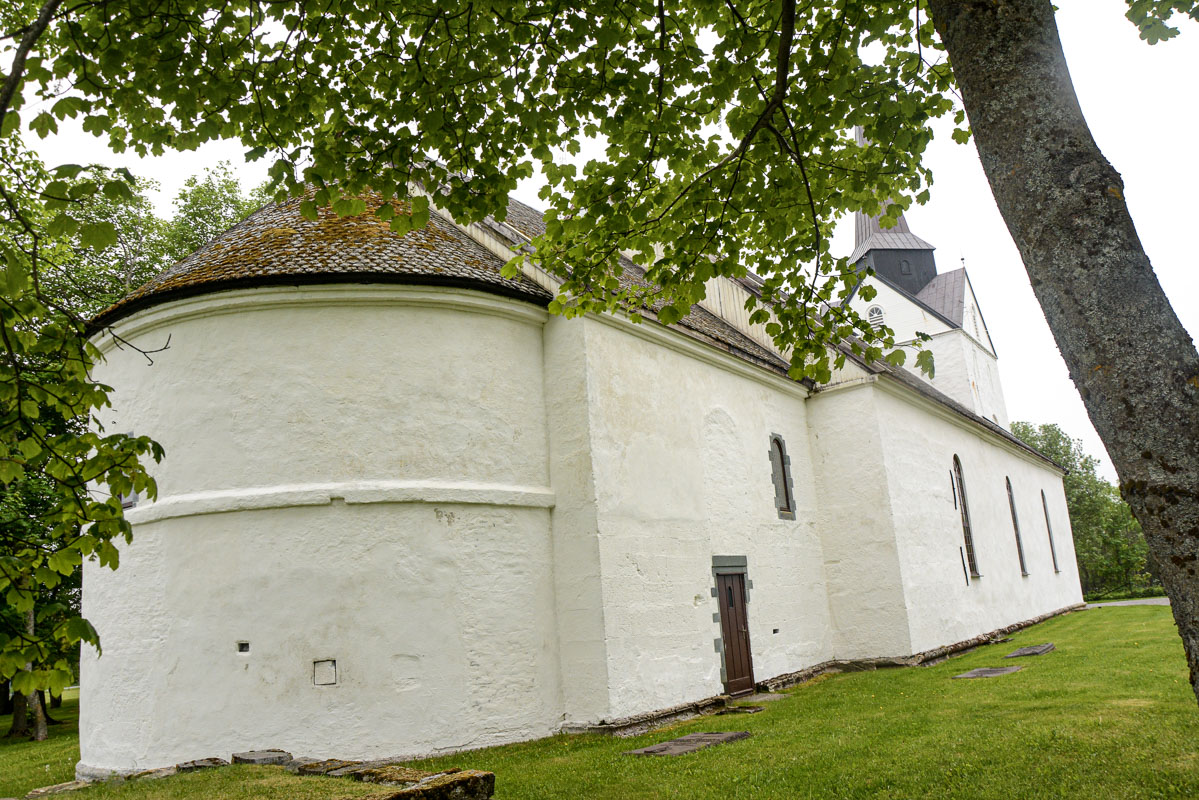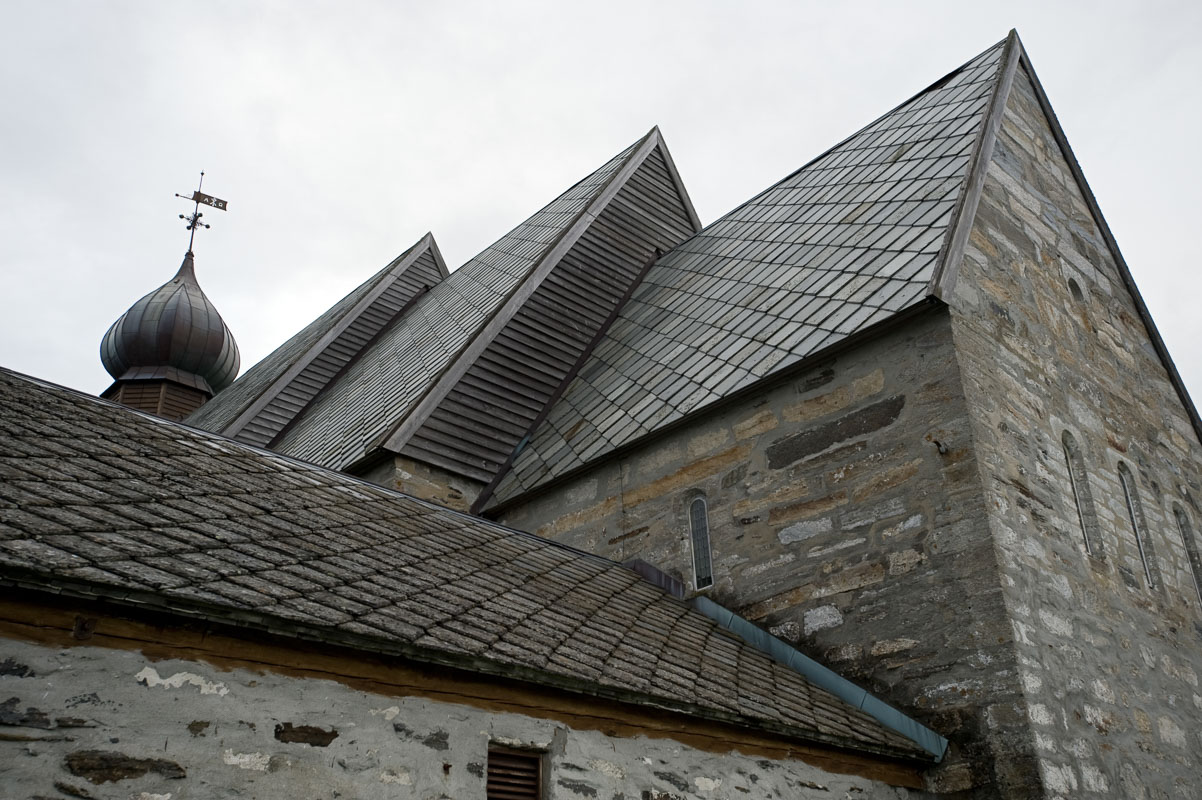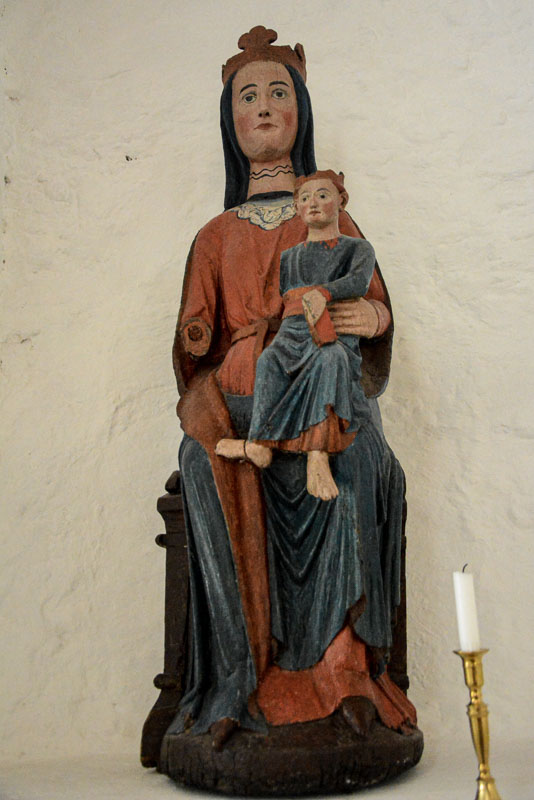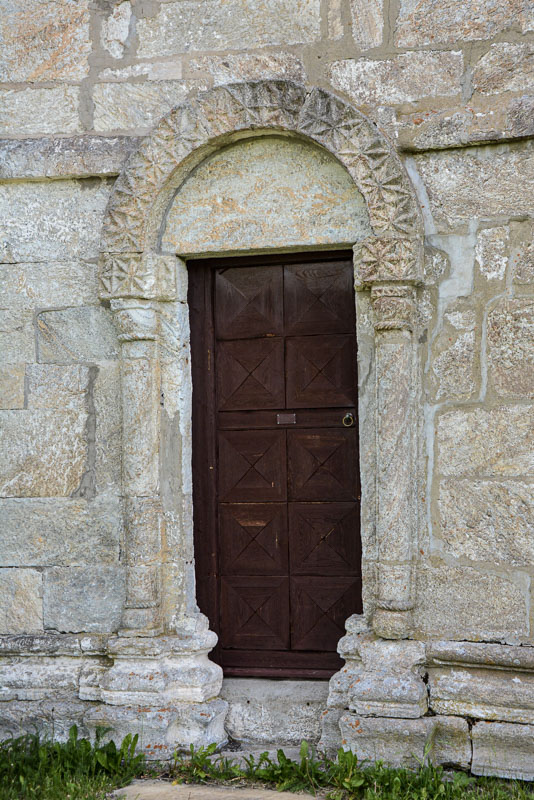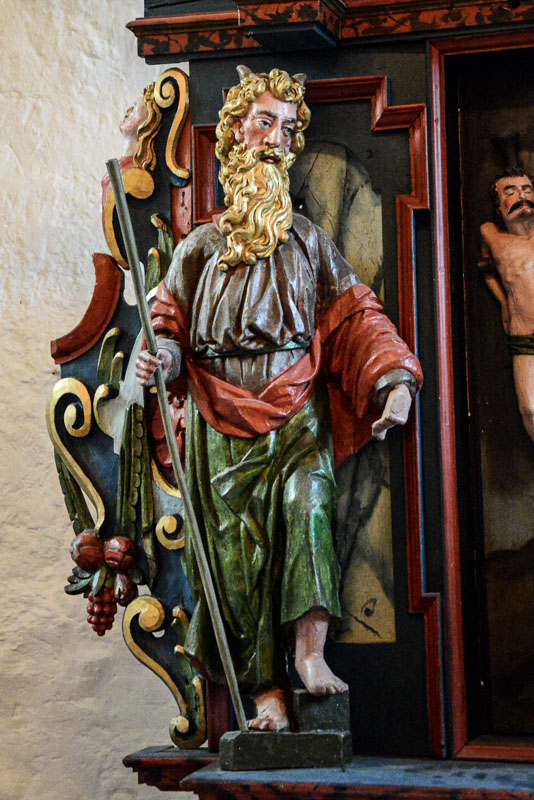In the midst of the rich cultural landscape of Helgeland, sheltered by The Seven Sisters, three Medieval churches have stood for 8-900 years, built on sacred ground and at places of assembly that date much further back in time. A visit to these beautiful churches invokes the poetry, history and art of Helgeland.
Choose an elevated point, such as Mount Dønnamannen or one of the Seven Sisters mountains, and you will see the two onion-shaped domes on the churches at Dønnes and Alstahaug and the spire on Herøy Church. All three churches were built at ancient places of assembly where poets, nobles, warriors and the ordinary people of Helgeland would meet.
Alstahaug is Petter Dass’s church
Alstahaug Church at Alsten, south of Sandnessjøen, was built of locally quarried soapstone in the 12th to 13th centuries. The southern choir portal is held to be one of the finest Romanesque portals in Norway.
Find the triangle churches
The three churches are found in the municipalities of Alstahaug, Herøy and Dønna, with the small town of Sandnessjøen being a good starting point.
Alstahaug church is located along Kystriksveien, fylkesvei 17. Herøy forbindes med sambandet Søvik-Herøy (nær Alstahaug), and the Bjørn to Sandnessjøen ferry service from Dønnes. You can drive to Alstahaug, take the ferry from Søvik to Herøy, drive across the islands of Dønnes, and then take the ferry from Bjørn to Sandessjøen.
Yes you can! The area is perfect for cycling with plenty of historical sights to stop at along the way. Accommodation and shops can also be found along the route.
Helgeland Reiseliv‘s homepage has good information, there is also information on the coastal route at Kystriksveien.
Petter Dass was the vicar at Alstahaug
Our famous parson-poet, Petter Dass, was the Lutheran pastor at Alstahaug from 1689 and up until his death in 1707. Both the richly decorated Baroque altarpiece and baptismal dish were donated by him. The church was enlarged in the 1800s: the choir became the sacristy and the nave became the choir. A new nave was then built. This allowed most of the old church to be preserved when the need arose for more space for the congregation.
The Parsonage is well preserved
The Parsonage at Alstahaug dates back to the first half of the 18th century, and has well-preserved interiors from the 18th and 19th centuries. A striking and effective contrast is provided by the modern new building at the Petter Dass Museum (designed by the internationally acclaimed Norwegian architectural practice Snøhetta), which houses a centre for documents relating to the parson-poet Petter Dass.
Dønnes church is perhaps Northern Norway’s most beautiful
Dønnes Church is the youngest of the three churches, and was probably built in the early 13th century. Built in a transitional style between Romanesque and Gothic, it also has many details which are Gothic in flavour.
The church was a private church for the nobility
The church was originally built as a chapel for Dønnesgodset, one of the greatest landed estates in North Norway. At the end of the 17th century a mausoleum was also built beneath the church. It is the largest and best preserved mausoleum in Norway, and contains the embalmed bodies of members of the Tønder and Coldevin families. The local parish took over the church in the 1860s, when it acquired a new nave, and the old nave became the choir. The church is still in use, and in 2006 was awarded the title of “North Norway’s most beautiful church”.
Herøy church is called Helgeland’s cathedral
Herøy Church was built of soapstone in the 12th century and is the largest of the triangle churches. Built in the Romanesque style, it is the only church in North Norway with an apse, a semi-circular vaulted recess terminating the choir. Herøy Church was also enlarged in the 19th century, with the nave being extended to the west. A tower was also added.
Once the old gods were worshipped here
Iron Age archaeological finds suggest that the area where the church stands was formerly a pagan place of worship. In Medieval times, the “leidang” (English: lething), a form of conscription for naval defences organised among the local free farmers, was connected to the church. It was here that the farmers would assemble when there was danger to the realm. Herøy was for a while the centre of power in Hålogaland, and Herøy Church may then have been the most important church in what is present-day Nordland and Troms.
Many coins were found under the church
In the 1960s, the church underwent a major programme of restoration, and a considerable number of coins were found beneath the choir, the oldest dating right back to the time of King Sverre (1177-1202). The old stone altar was also found. The altar has five crosses carved in it and stood as the main altar in the apse. Now restored, it has once more found its place in the church.
